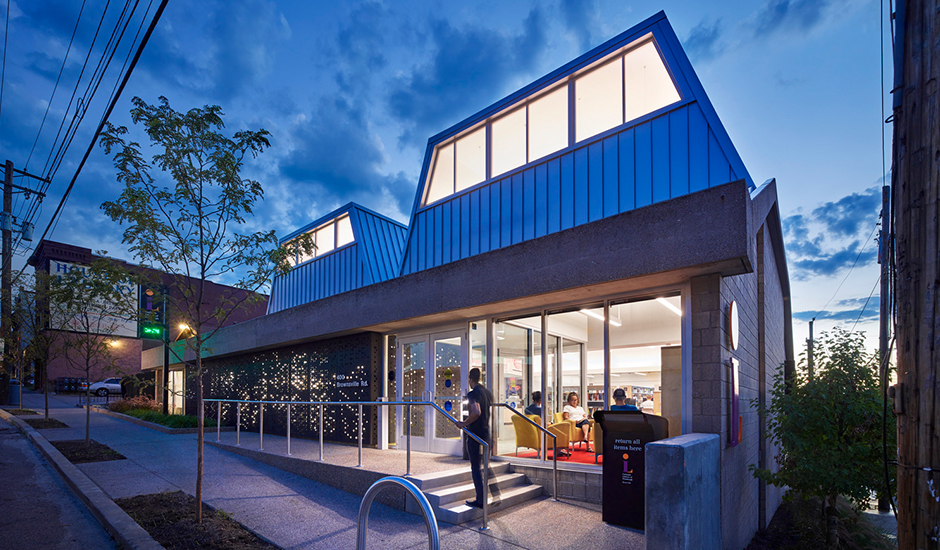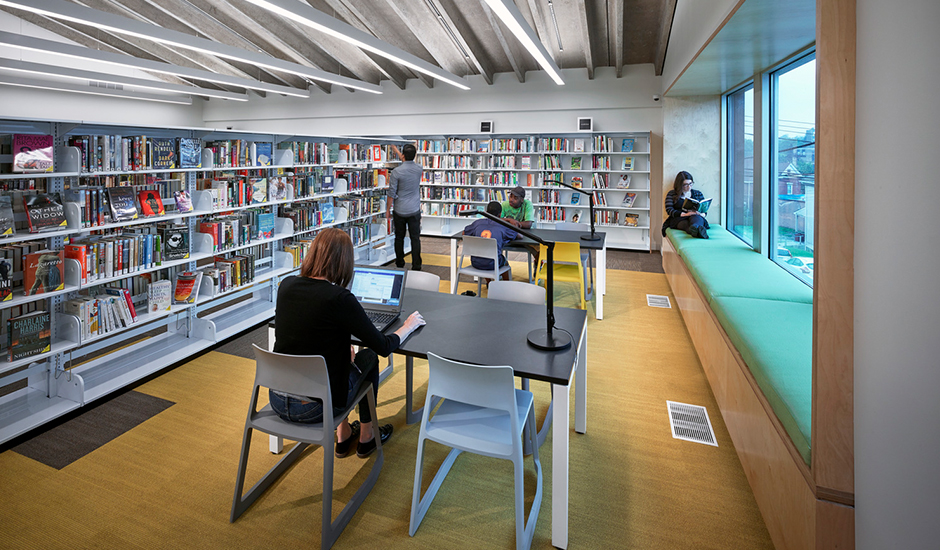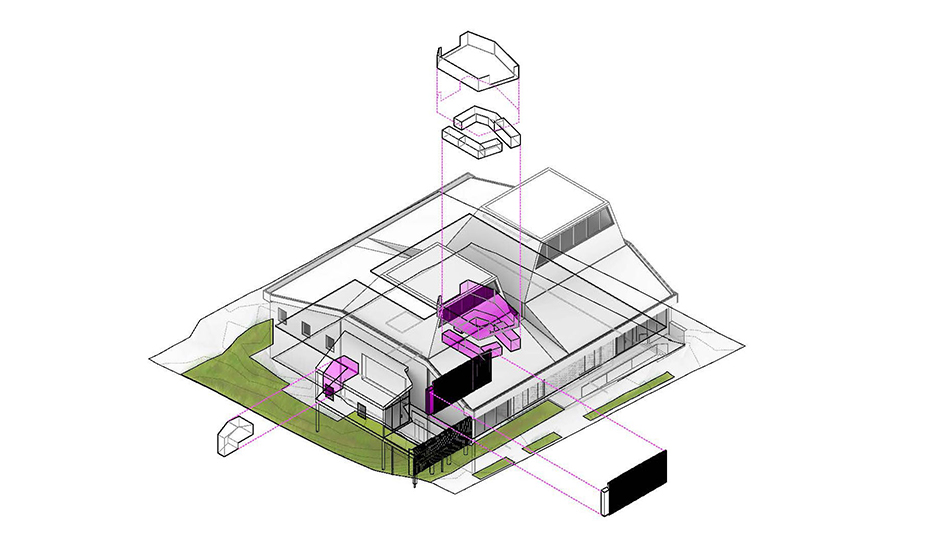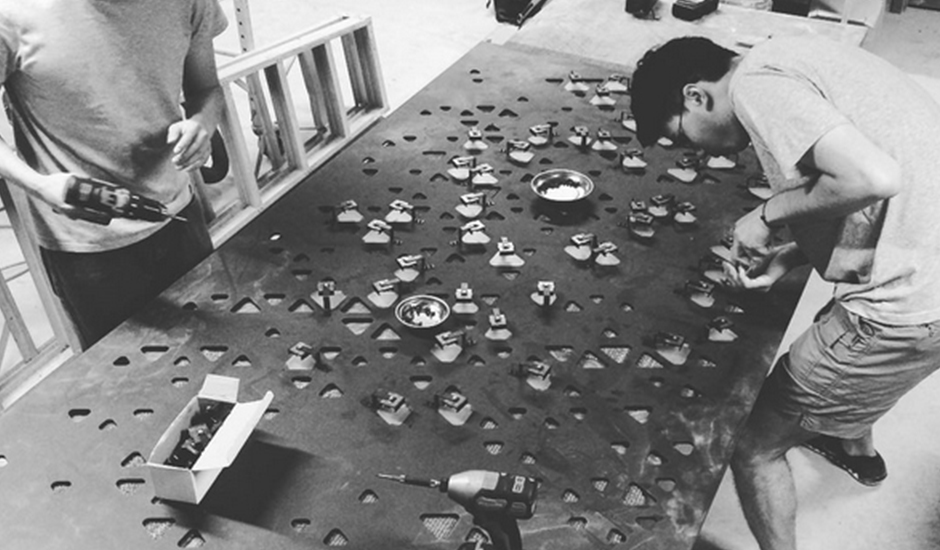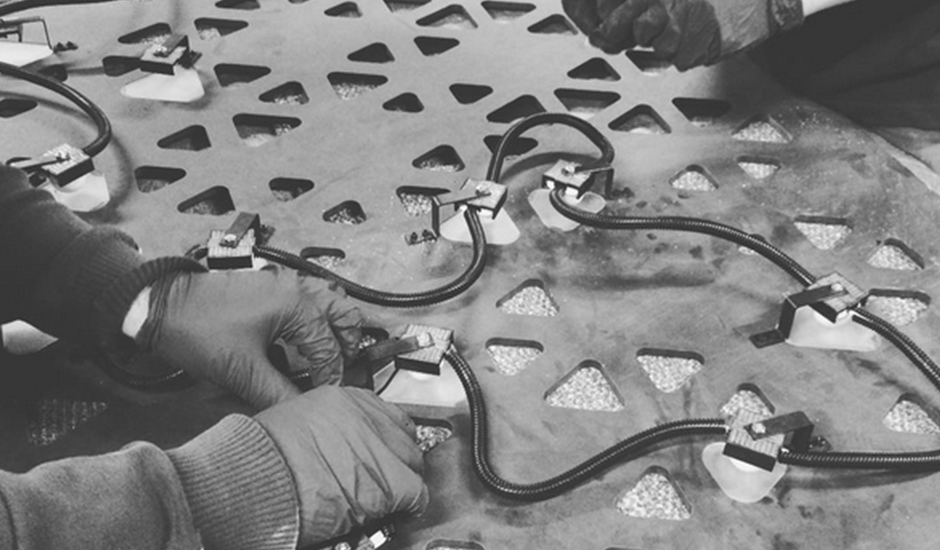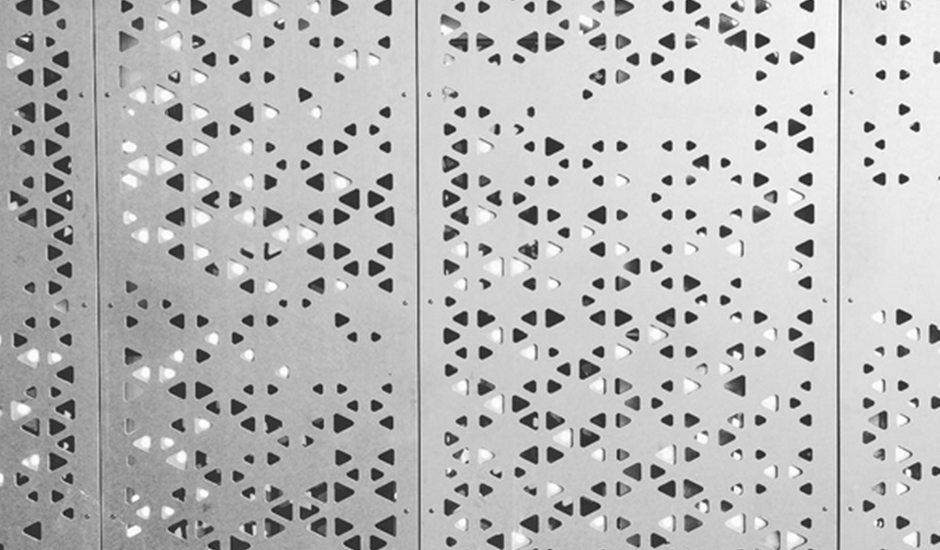Springing to Life
Carnegie Library of Pittsburgh, Knoxville
←
To Project Types
Pittsburgh, PA | 9,800 SF
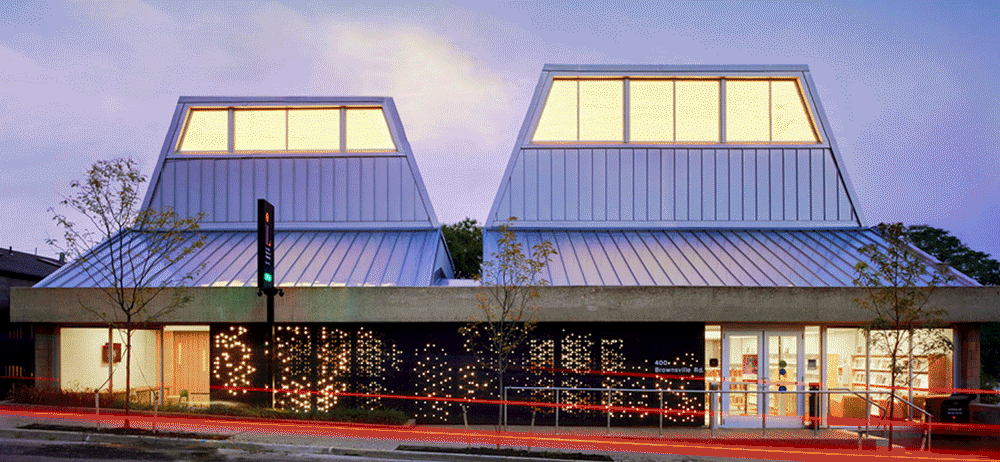
Since 1895, the Carnegie Library of Pittsburgh has empowered people to learn and grow by providing access to information in free, open, and inclusive environments. But in Pittsburgh’s Knoxville neighborhood, a neglected and foreboding physical structure was impeding community access to library services. This renovation transforms a 1962 Brutalist concrete masonry building into a warm and inviting destination for a diverse, working class community. The new design now facilitates views to the street and brings daylight to the interior.
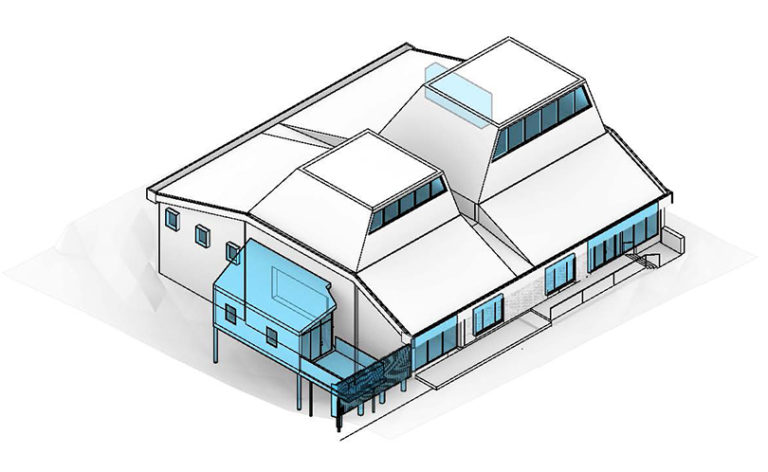
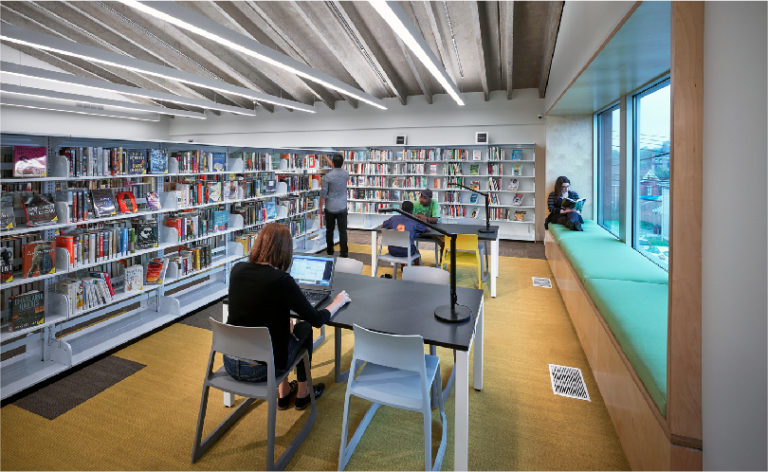
The dramatic form of the building, including the two large roof monitors, was maintained while enhancing the interior spaces. Small daylight-filled additions at the front and the side of the original building maximize the interior plan, providing a dedicated area for teens and an expanded children’s area with an outdoor deck.
More people are coming, and they’re staying longer. They’re not just picking up a book or getting on a computer. It’s become more of a community center.
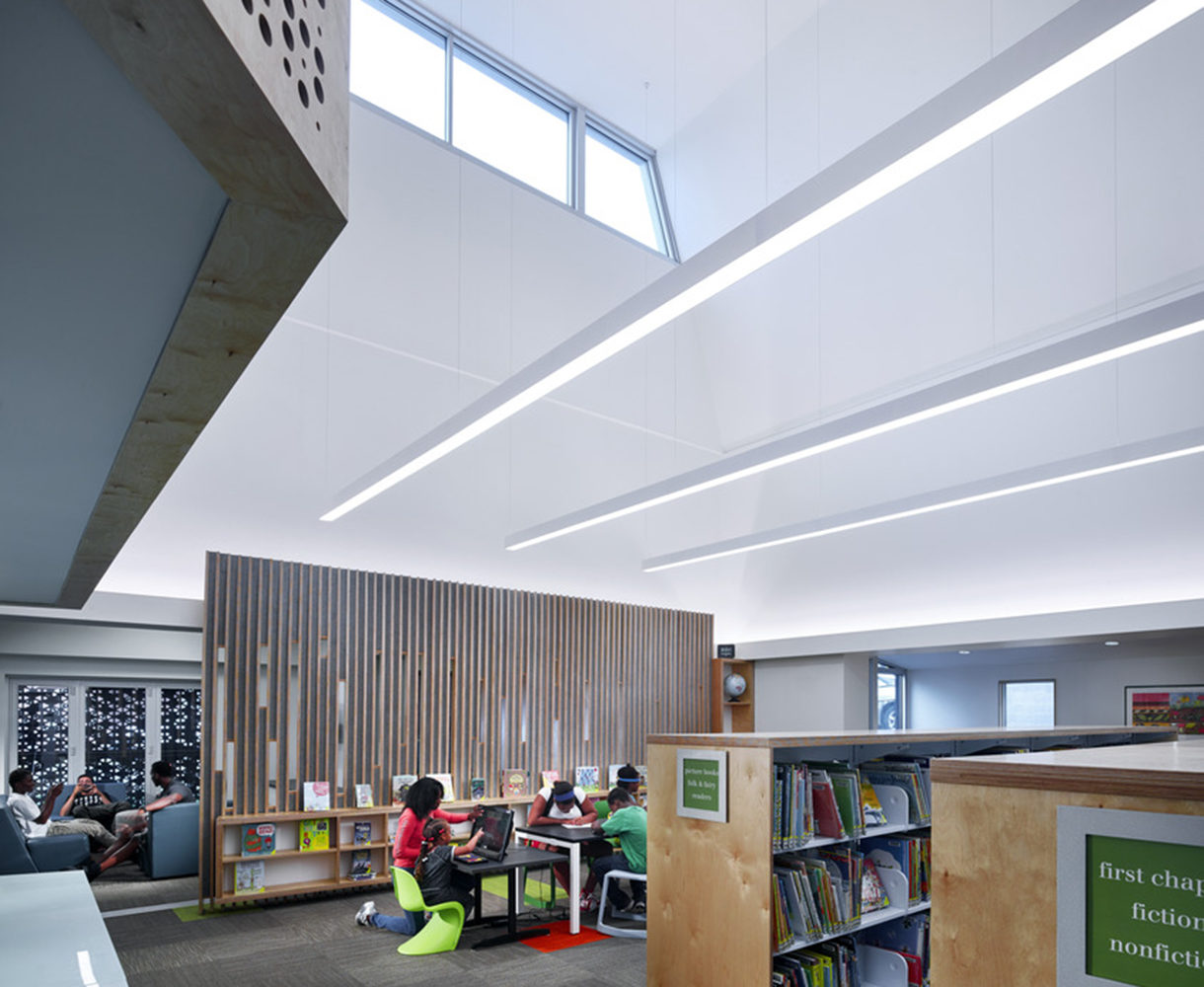
The adult services area was enlarged and adds zones within the open space plan for computer use, casual reading, gathering, and quiet study, among other activities. Two meeting rooms at the lower level are available for library programs and community use. An interactive light display that animates the front façade at night doubles as an educational tool—patrons can control the display from a computer in the teen area.
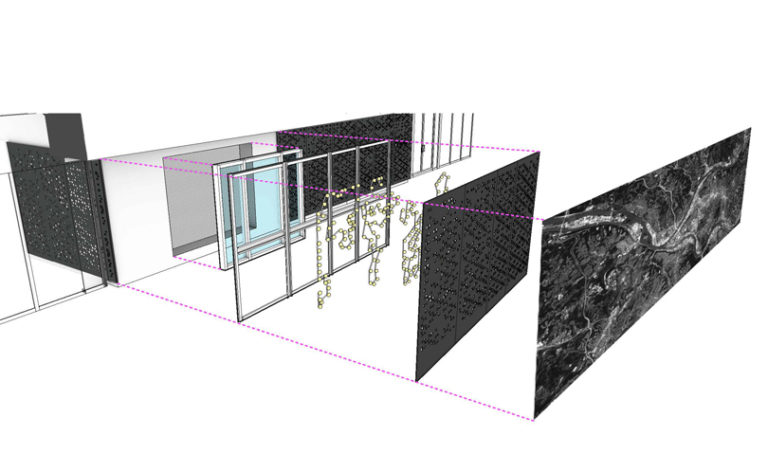

Sustainable design features include LED light fixtures and a variable refrigerant flow heating and cooling system designed for efficiency. Exterior landscaping incorporates a rain garden and plantings on the steeply sloped site to control erosion and improve storm water runoff quality.
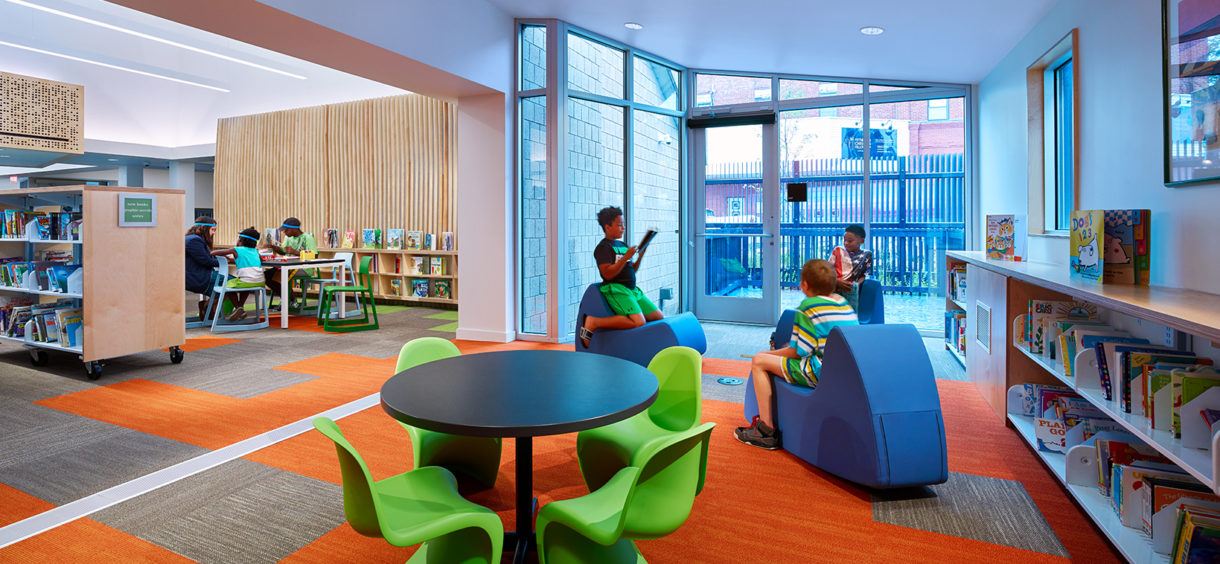
-
Awards

AIA Pennsylvania Architectural Excellence Design Award





